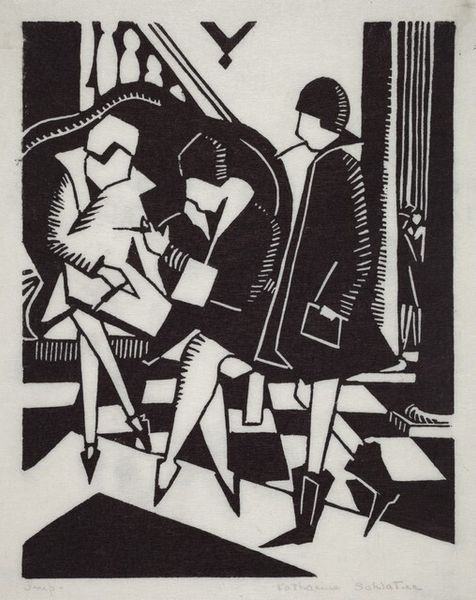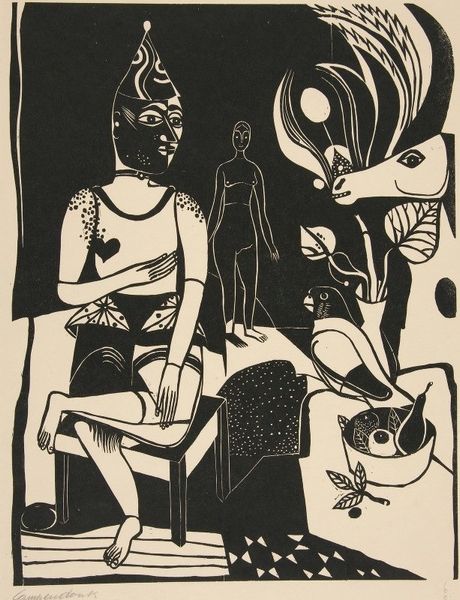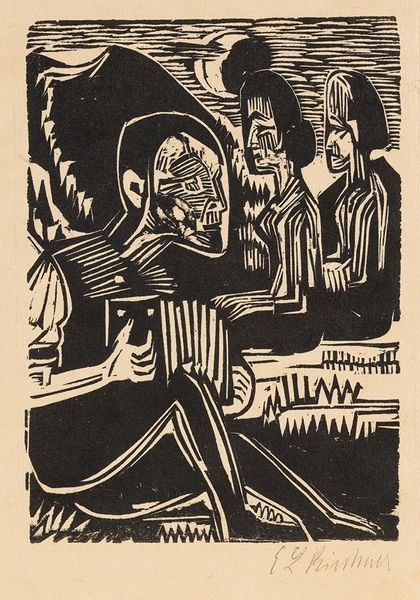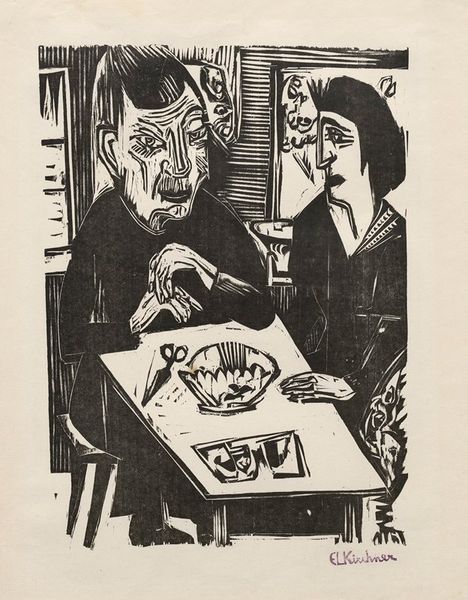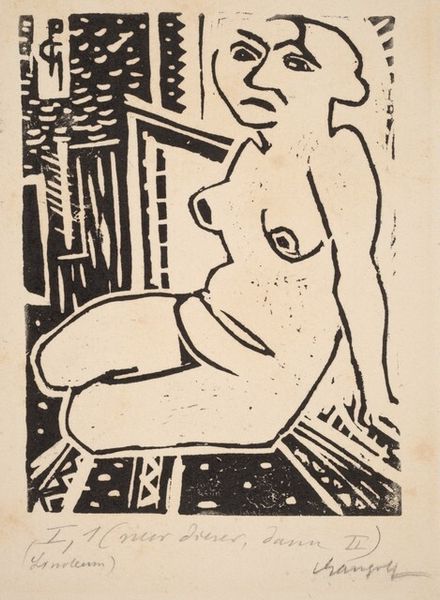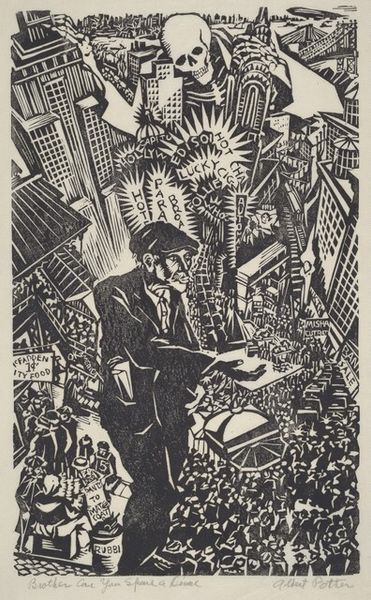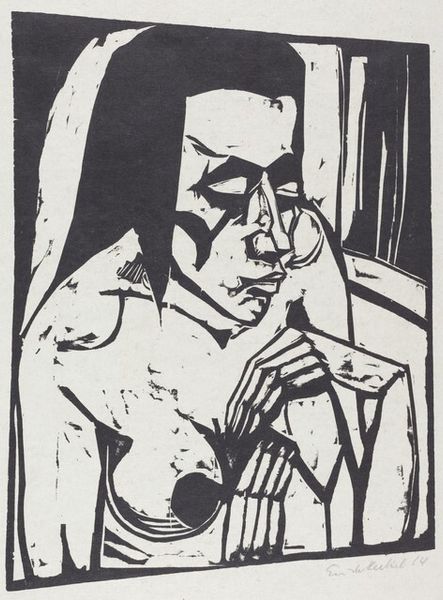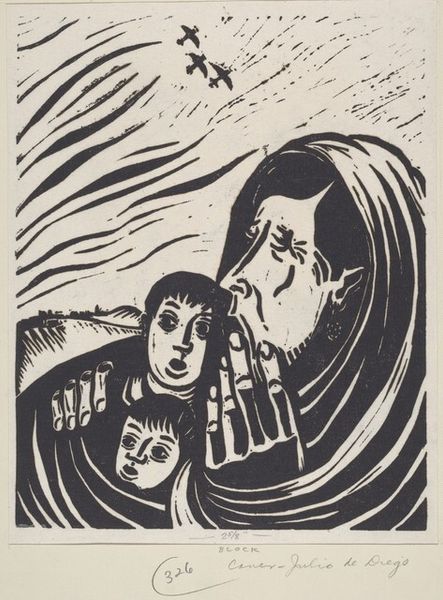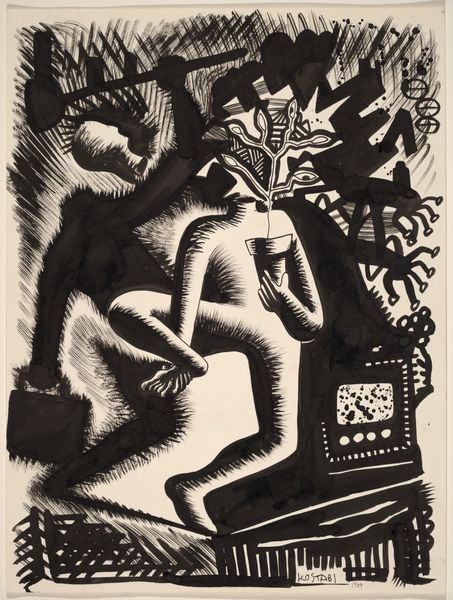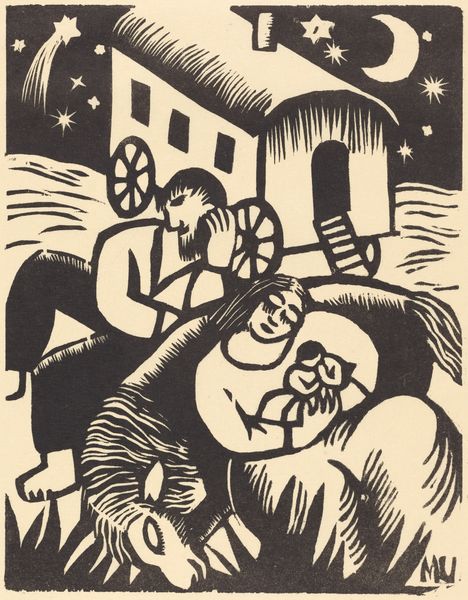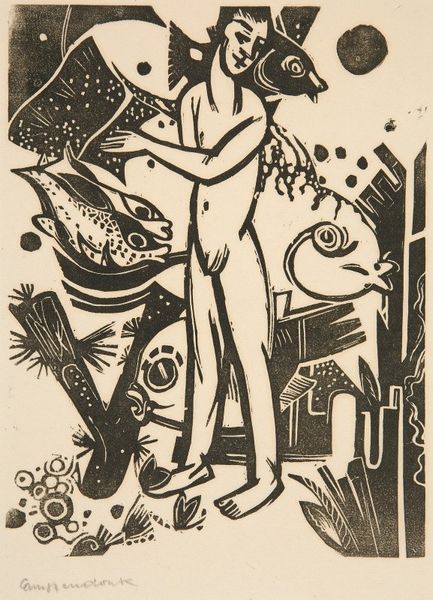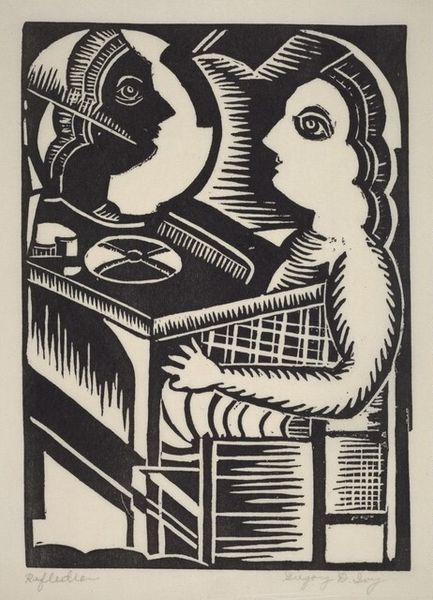
print, woodcut
#
portrait
#
self-portrait
# print
#
caricature
#
caricature
#
figuration
#
geometric
#
expressionism
#
woodcut
Copyright: Sandor Bortnyik,Fair Use
This is Sándor Bortnyik's self-portrait from 1928, created in linocut, a type of relief printmaking. The stark contrast of black and white immediately grabs our attention. It is a composition dominated by sharp, angular forms, which evokes a sense of dynamism and modernity. Bortnyik employs a visual language that merges the personal with the abstract. The artist depicts himself surrounded by symbols: a nude figure, buildings, a flower, a bird. These are not presented naturalistically, but rather as stylized emblems, creating a semiotic landscape where each element functions as a signifier within a larger system. The artist's style suggests engagement with Constructivism and Bauhaus aesthetics, emphasizing structure, geometry, and the integration of art with technology. The self-portrait is a visual manifesto, reflecting the artist's commitment to modernism and its utopian ideals. It underscores the idea that an artwork’s significance comes from the dynamic interplay of form and content, inviting endless interpretations.
Comments
No comments
Be the first to comment and join the conversation on the ultimate creative platform.
